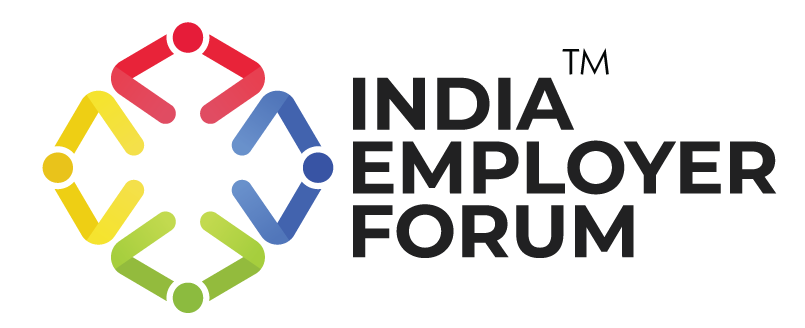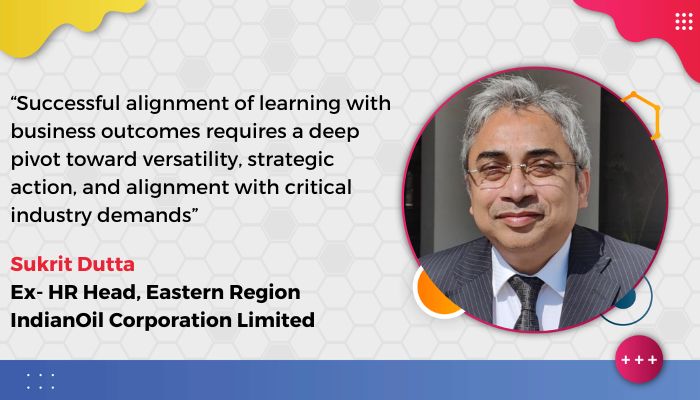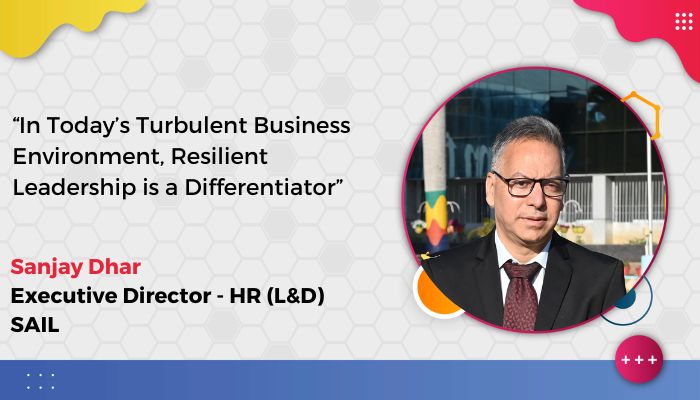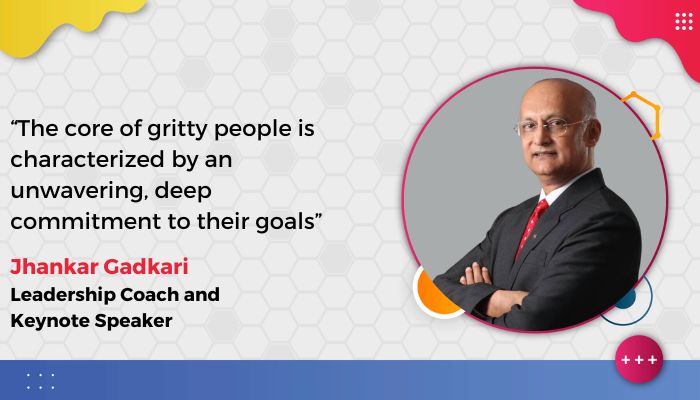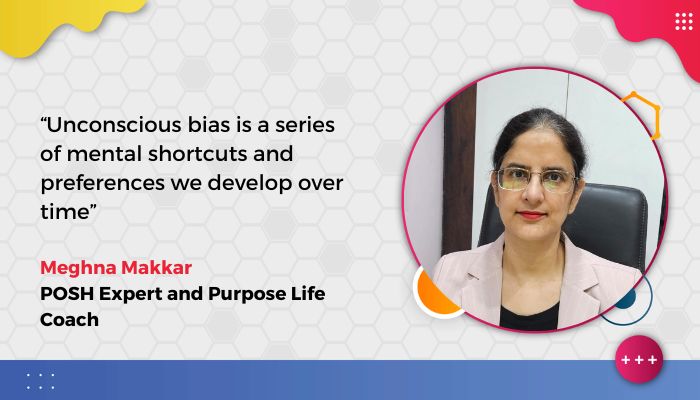By Sukrit Dutta, Ex-HR Head, Eastern Region, IndianOil Corporation Limited | Consultant | Visiting Professor to select IIMs and IIFT
In an era defined by rapid technological change and shifting global dynamics, the traditional trajectory of professional development is proving obsolete. The rise of economic giants like India, now the 4th largest global economy, aiming for the 3rd largest by 2027-28, frames the contemporary professional landscape as Globalization 3.0, where power centers on the individual’s ability to connect, work, and share information on a global scale. Within this highly competitive environment, professionals must face a fundamental challenge: bridging the skills gap, which is defined precisely as the difference between “having knowledge” and taking action to achieve a result.
This gap represents a significant obstacle to personal development, organizational performance, and long-term career success. Successful alignment of learning with business outcomes requires a deep pivot toward versatility, strategic action, and alignment with critical industry demands, especially those driven by technological advancements like Artificial Intelligence (AI) and the principles of Industry 5.0. The most crucial shift in professional development is the move towards multidisciplinary expertise. Companies are actively seeking people who understand more than just one professional role. Multidisciplinary learning integrates knowledge and skills from several academic disciplines, including technical, administrative, management, and business objectives to foster a holistic understanding necessary for solving complex industrial issues.
This integrated approach offers powerful competitive advantages:
- Adaptability and Innovation: Applying knowledge from multiple fields enables professionals to solve problems creatively and stay ahead in fast-evolving industries.
- Higher Employability and Collaboration: Versatile, “smart” engineers with cross-domain expertise are in significantly higher demand across industries. This diverse skill set facilitates stronger collaboration and seamless teamwork with professionals from varied backgrounds, driving better project outcomes.
- Driving Business Results: Cross-functional knowledge leads directly to improved business outcomes, including better decision-making by enabling leaders to see the big picture and faster problem-solving due to wider skill sets.
Multidisciplinary skills are reshaping traditional career ladders. For example, an Engineer who develops strong business acumen can transform into a highly effective Product Manager; similarly, an Engineer who gains legal knowledge is prepared to become a Corporate Policymaker. Cross functional knowledge is also essential for those pursuing entrepreneurship, as it fuels new ideas and solutions by combining insights from different domains. The ability to address complex industrial problems, such as designing a Renewable Energy System, requires combining Electrical Engineering (power electronics), Mechanical Engineering (turbine mechanics), Environmental Studies (site impact), and Economics (cost-benefit analysis).
To align learning with current and future business needs, professionals must understand the expectations driven by global industry trends. Industry 5.0, defined by its focus on being human-centric, resilient, and sustainable, demands specific competencies from the workforce.
The modern talent force is expected to demonstrate:
- Tech Fluency Beyond the Core: Technology is now embedded in every operational layer, requiring professionals across all fields, not just coders, but also marketers, HR, and sales personnel, to possess data and tech literacy. Digital and Data Skills, including familiarity with tools like Python, Power BI, Tableau, and SQL, are now foundational, even in non-technical roles. This is critical given the huge, escalating investments in AI, which is expected to be embedded across every layer, from operations to customer service.
- Adaptability and Learning Agility: Companies value learners who can rapidly upskill and evolve with technology. In high-growth sectors, such as the IT Services market projected to reach USD 51.05 billion by 2030, the ability to pivot between roles and domains is essential.
- Soft Skills and the Innovative Mindset: Crucial human skills like critical thinking, collaboration, communication, and emotional intelligence (EQ) are highly sought after. Furthermore, businesses value an innovative mindset, often referred to as intrapreneurial, which encourages employees to bring startup-style creativity and innovation within the structure of a traditional company.
The critical step in bridging the skills gap involves moving past the “Motivation Deficit,” the psychological barrier of knowing what needs to be done but failing to take action. This failure is often rooted in the fear of failure or the ambivalence of resisting change.
To successfully translate learning into quantifiable business outcomes, professionals must prioritize action and implementation:
- Focus on Action: Take concrete steps to implement acquired knowledge.
- Clear Goals and Plans: Define specific objectives for applying new skills.
- Feedback and Accountability: Seek mechanisms to ensure progress and measure impact.
- Learn from Experience: Embrace a mindset of continuous improvement, learning from both successes and failures.
This action-oriented approach, when backed by multidisciplinary knowledge, allows individuals to effectively address real-world, practical industrial issues and enhances problem-solving capabilities.
Ultimately, the best careers are crafted, not found. This crafting requires deep self-awareness, where professionals reflect on their intrinsic motivations and personal values (such as prioritizing work enjoyment vs. financial success, or autonomy vs. structure) to ensure their career path is congruent with their needs.
When pursuing roles, strategic communication is paramount. Candidates must perform their “homework” on the organization, its culture, and the specific job requirements and challenges. The most effective way to demonstrate alignment is through powerful storytelling, crafting narratives that connect personal experiences, values, and achievements directly to the skills required for the job. When presenting strengths, the response should move beyond generic statements (like “communication skills”) to specific, descriptive counterparts (like “public speaking and presentation skills”). A strong response must incorporate four key elements: stating the strength, providing a real life example, quantifying the impact, and expressing the enjoyment of leveraging that skill. When addressing weaknesses, they should be reframed as easily correctable “challenges” that demonstrate a willingness to learn and improve, rather than permanent personality flaws.
By intentionally combining multidisciplinary learning, an action-oriented mindset, and highly strategic communication, professionals can ensure their expertise not only meets but anticipates the demands of the modern, rapidly evolving global economy.
Related Reads
About the author
With 36+ years at Indian Oil Corporation Ltd., Sukrit Dutt is a seasoned HR and Operations leader who has driven transformation across people strategy, industrial relations, and plant operations. As HR Head for the Eastern Region, he led 22,000+ employees, earning IOCL’s Top Performing HR Region award and saving ₹24+ crore annually. His operational leadership delivered ₹76+ crore in recurring savings through process and supply chain optimization. Blending strategic vision with hands-on execution, he now seeks executive or advisory roles to help organizations build agile teams and efficient, future-ready operations. You can connect with Sukrit here.
Disclaimer: The opinions and views expressed in this article, including any accompanying data, are the sole responsibility of the author and should not be construed as reflecting the official policy or position of India Employer Forum.
